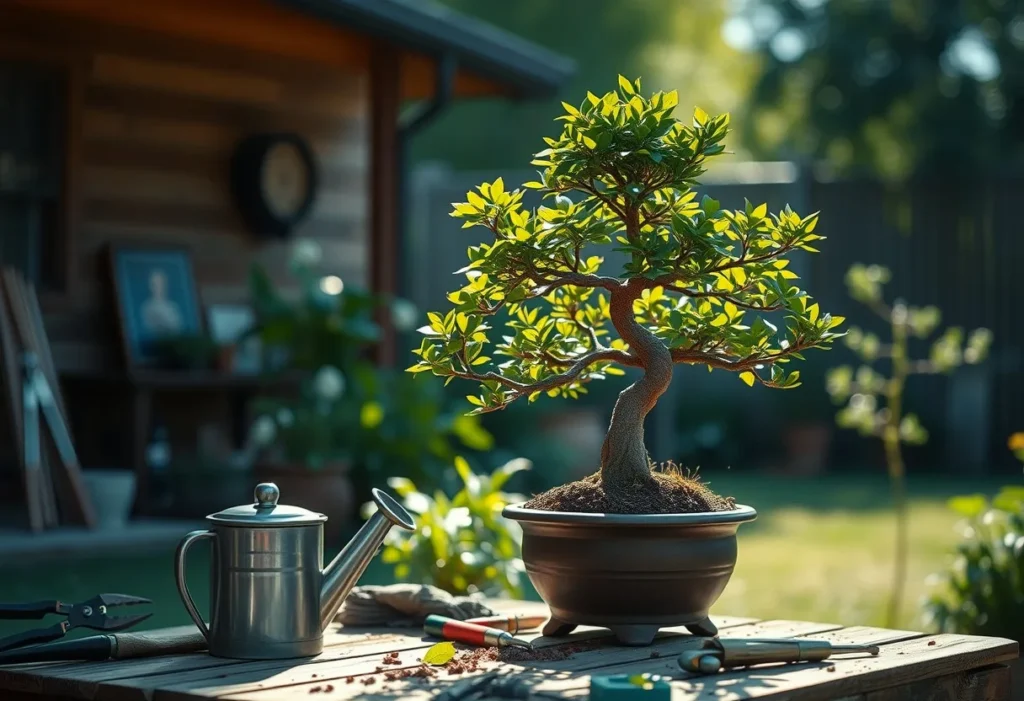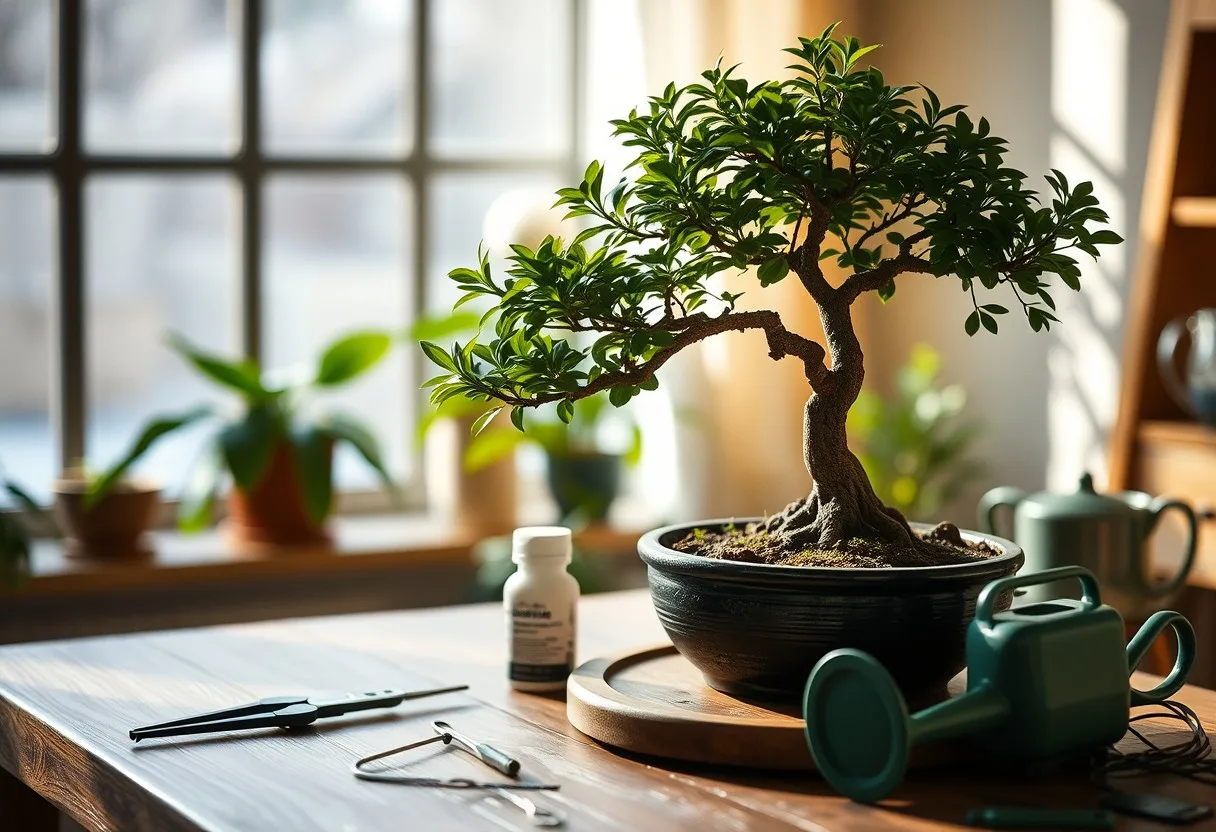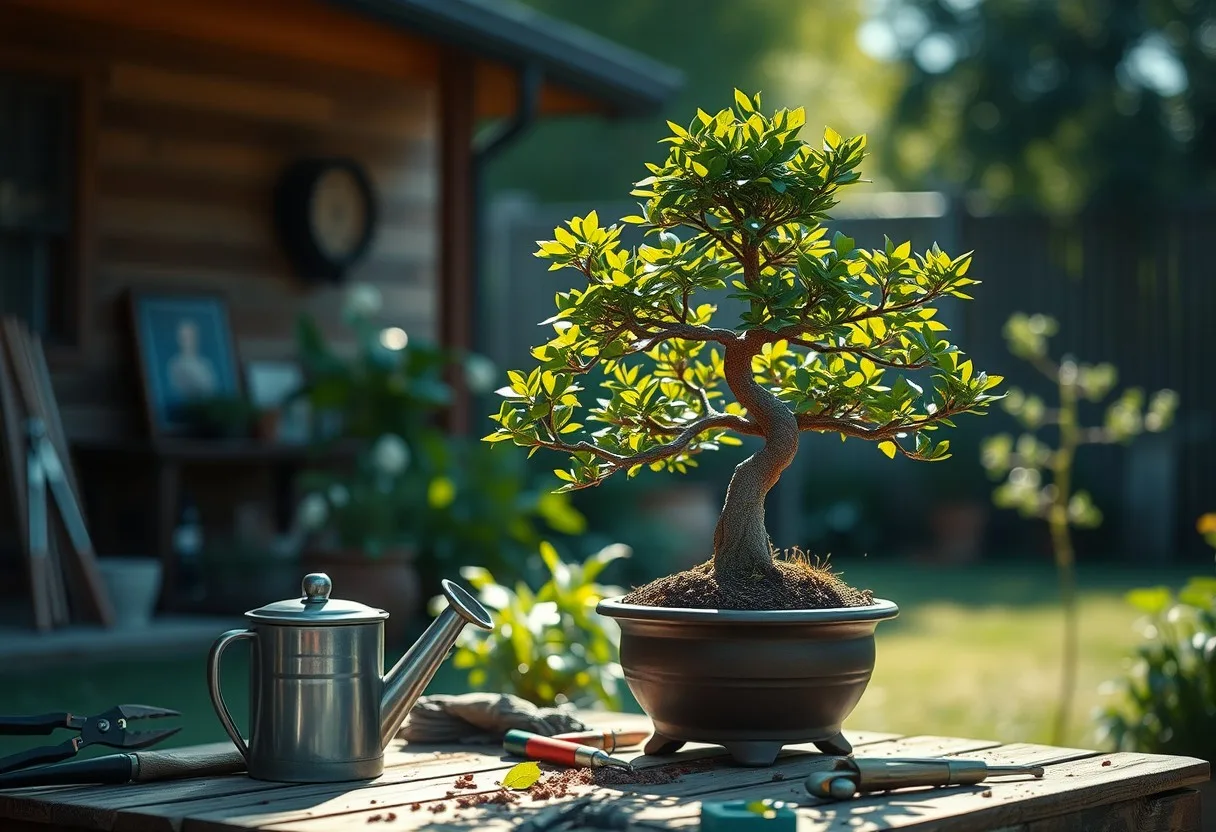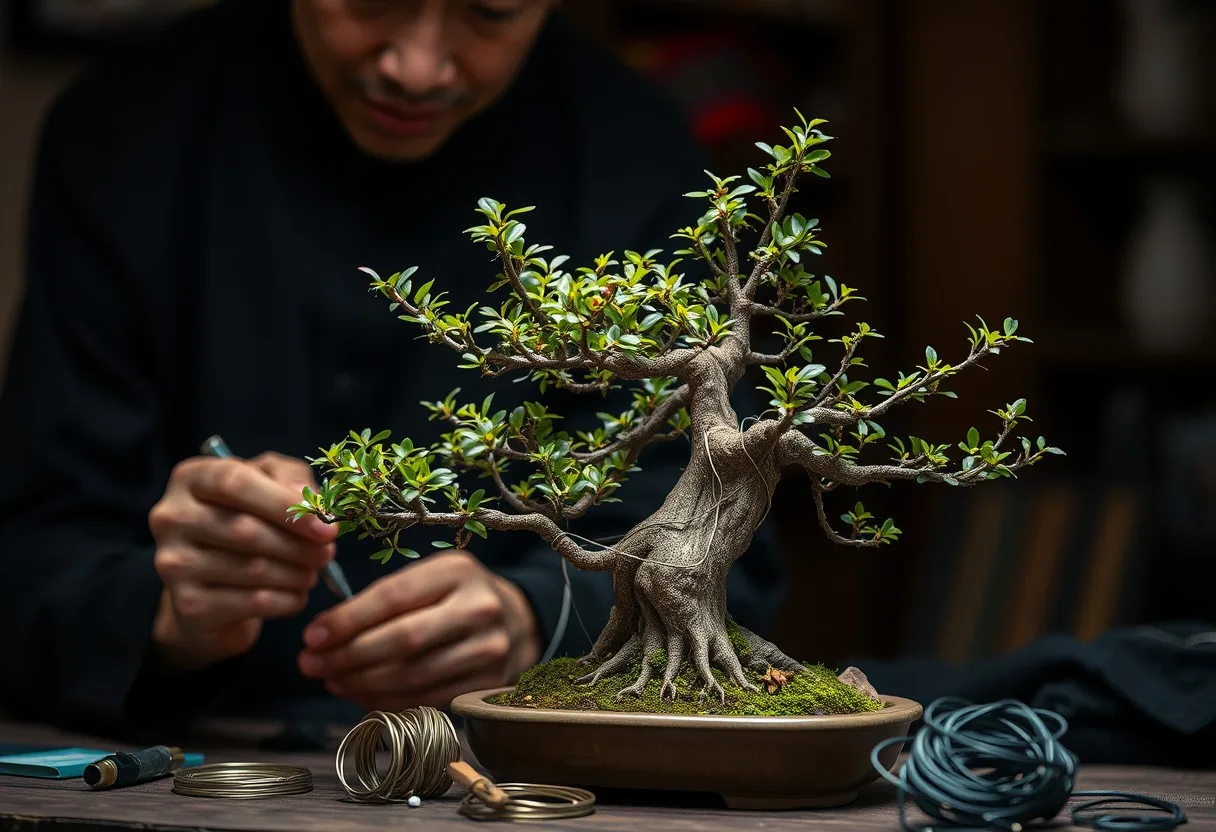Bonsai care is an intricate art that requires your attention and understanding of the specific needs of outdoor trees. You must select a suitable species based on your local climate, ensuring it thrives in the conditions you provide. Factors like sunlight exposure, humidity levels, and temperature play key roles in the health of your Bonsai. By following these guidelines, you can cultivate a thriving outdoor Bonsai that brings beauty to your garden while living in harmony with nature’s cycles.
Types of Outdoor Bonsai Trees
A variety of outdoor Bonsai trees thrive under specific environmental conditions. Selecting the right species for your region is necessary for healthy growth. Here are some options to consider:
- Frost-hardy species for cooler climates
- Subtropical species for mild winters
- Mediterranean species that withstand heat
- Flowering species for vibrant blooms
- Coniferous species for evergreen beauty
Perceiving these diverse options will help you choose the perfect outdoor Bonsai for your landscape.
| Frost-Hardy Species | These trees can tolerate cold temperatures. |
| Subtropical Species | Require mild winters for optimal growth. |
| Mediterranean Species | Thrives in hot, dry climates. |
| Flowering Species | Provide stunning seasonal displays. |
| Coniferous Species | Maintain year-round greenery. |
Frost-Hardy Species
Frost-hardy trees can withstand cold conditions and periods of dormancy, making them ideal for cooler climates. (Choosing a frost-hardy species will ensure robust health during winter months.)
Subtropical and Mediterranean Species
There’s a wide variety of subtropical and Mediterranean species that can thrive in mild climates. (Opting for these species can enhance your garden’s aesthetic year-round.)
Species such as Olive and Pomegranate flourish in subtropical conditions with warmth and sunlight, while Chinese elm and Japanese black pine adapt well to Mediterranean climates. However, be cautious; some species may require specific protection from frost or intense heat to ensure healthy growth. (Selecting the appropriate species based on your local climate is necessary for thriving Bonsai.)
Essential Care Tips
There’s a wealth of factors to consider for maintaining your outdoor Bonsai tree. Follow these necessary care tips to ensure your tree thrives:
- Provide optimal light conditions.
- Maintain the right humidity levels.
- Water and fertilize wisely.
- Protect your tree from extreme temperatures.
The success of your Bonsai largely depends on these care guidelines.
Light Requirements
Assuming you position your outdoor Bonsai tree wisely, it will benefit from ample sunlight. Most species thrive with at least a few hours of sun each day, while conifers generally prefer full exposure. (Choosing the right spot is necessary to prevent weak growth and pest issues.)
Humidity Management
On hot days or in enclosed areas, low humidity can stress your Bonsai. It’s vital to frequently mist your tree and utilize a humidity tray filled with water. You can also increase moisture by wetting surrounding surfaces.
Requirements for humidity management include ensuring your tree has adequate moisture during dry spells, particularly if positioned in a paved area surrounded by walls. Insufficient humidity can lead to stress and increase the risk of pest infestations. By taking these steps, you create a healthier environment, promoting your Bonsai’s overall vitality and growth.
Step-by-Step Watering and Fertilizing
Clearly, proper watering and fertilizing are important for the health of your outdoor Bonsai tree. Below is a breakdown of key practices to ensure your tree thrives:
| Practice | Recommendation |
|---|---|
| Watering Frequency | Only water when needed, monitoring weather conditions. |
| Fertility Management | Fertilize according to the specific needs of the species. |
Watering Techniques
Techniques for watering your Bonsai include checking the soil’s moisture level before applying water and ensuring it drains well. Always water deeply, allowing excess to flow from the drainage holes. This encourages deep root growth and maintains tree health.
Fertilization Schedule
While establishing a fertilization schedule, factor in your tree species and its growth cycle. Typical recommendation is to fertilize every 4-6 weeks during the growing season and reduce feeding in winter. (Your tree’s species will dictate specific nutrient needs.)
Step by step, you should assess your Bonsai’s response to fertilization, adjusting the schedule based on its growth. For example, if you notice yellowing leaves, it may indicate insufficient nutrients. Proper fertilization will enhance growth, bloom, and fruiting, making your tree more resilient.
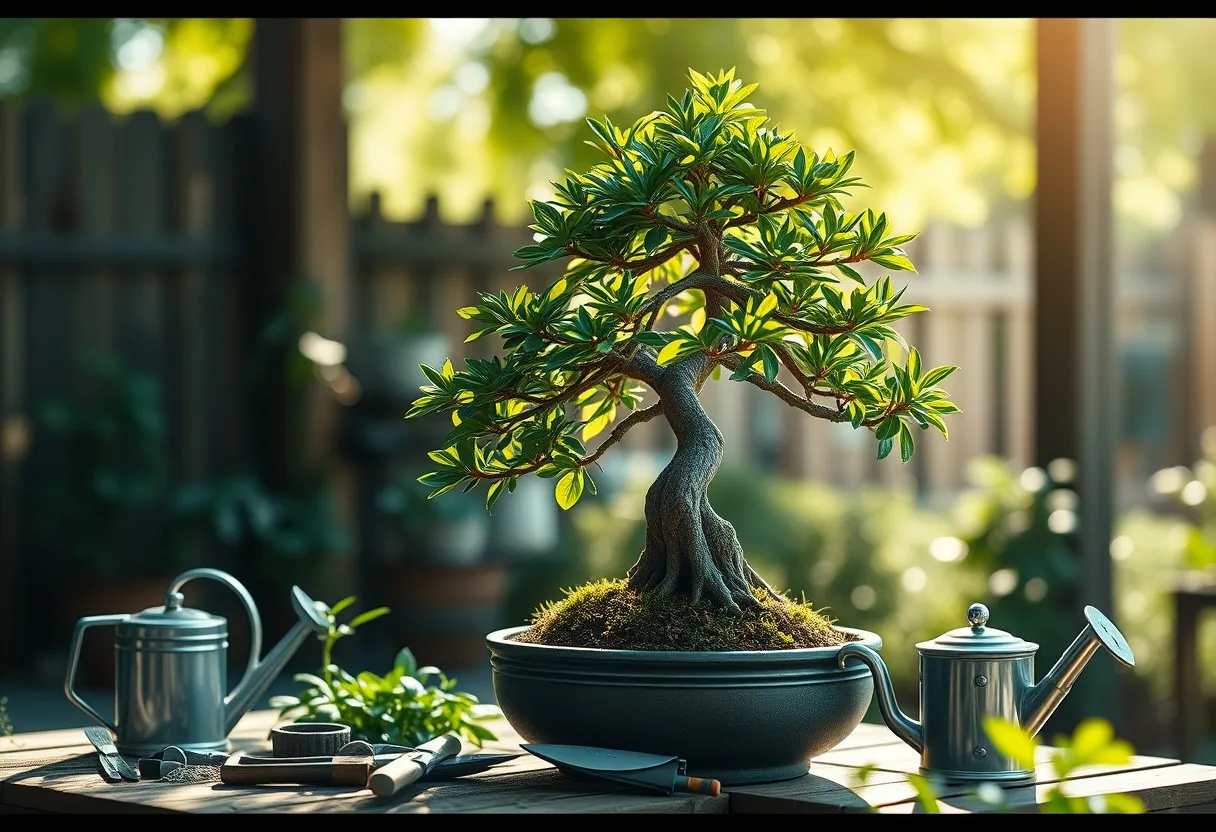
Factors Influencing Bonsai Growth
Unlike traditional gardening, growing Bonsai trees involves various factors that significantly impact their health and vitality. Consider the following:
- Local Climate
- Humidity
- Sunlight Exposure
- Soil Quality
- Watering Practices
This understanding helps you tailor your care approach to optimize your outdoor Bonsai’s growth.
Local Climate Considerations
The local climate plays a fundamental role in the types of Bonsai trees you can successfully cultivate. Different species thrive in various conditions, so it’s necessary to choose trees compatible with your area’s temperature, precipitation, and overall climate.
Garden Conditions
Growth conditions in your garden can greatly affect the performance of your Bonsai trees. Factors such as sunlight availability, soil drainage, and wind exposure are vital for healthy foliage and root systems. Be mindful of full sun versus shaded areas, as trees like Azalea prefer filtered light while Junipers thrive in direct sunlight. A garden with high humidity can support your trees in arid conditions, while poor drainage could lead to root rot. Adjusting your garden’s micro-environment elevates the chances for a flourishing Bonsai.
Climate is another significant factor; regions with hot summers and cold winters require you to provide semi-shade during summer and protection against frost in winter. Ensure that your Bonsai is able to experience winter dormancy but is shielded from harsh environmental elements, creating a balance that allows your trees to breathe and grow properly.
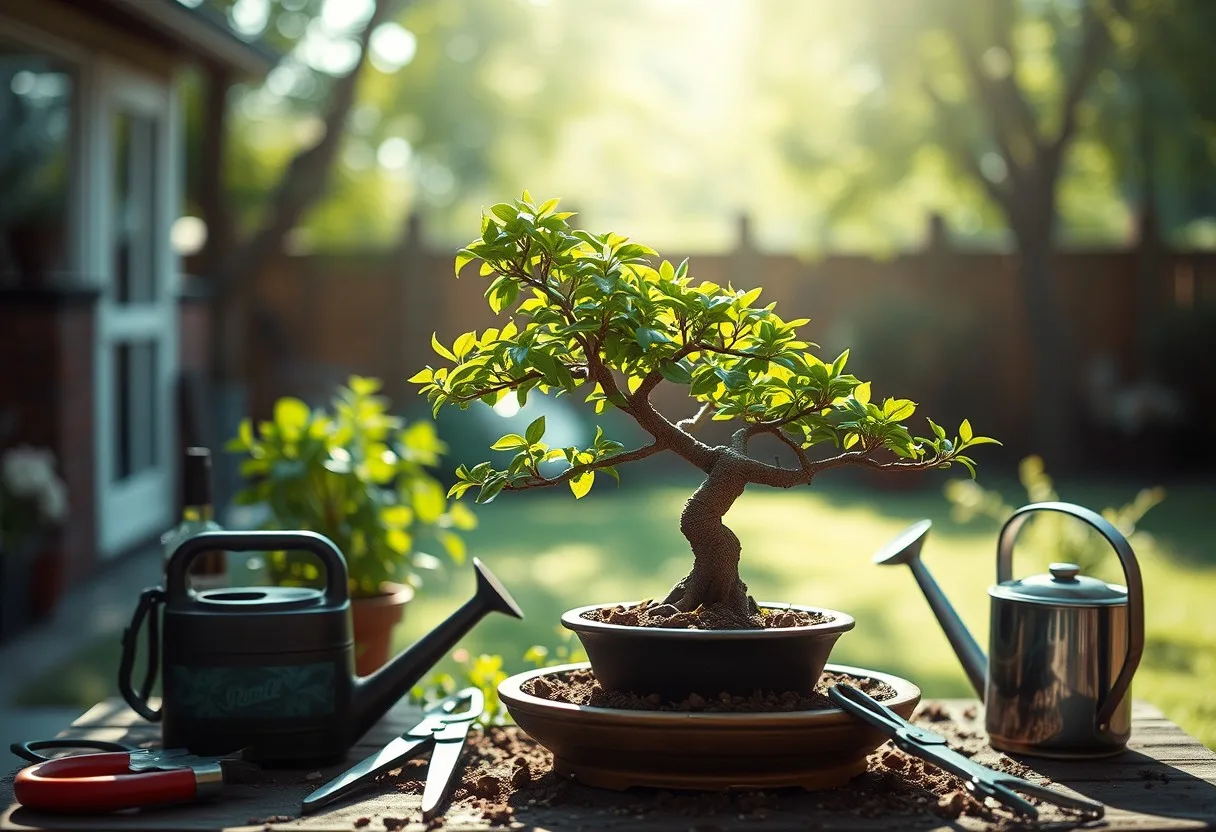
Advantages and Disadvantages of Outdoor Bonsai
Keep in mind that outdoor Bonsai cultivation comes with its own unique set of advantages and disadvantages. Understanding these factors will help you make informed decisions about your Bonsai tree care.
Pros of Outdoor Bonsai Cultivation
Bonsai trees thrive when exposed to natural elements, which can enhance their growth and resilience. By keeping your tree outdoors, it benefits from varying temperatures and humidity levels, necessary for a healthy lifecycle. Additionally, outdoor trees often exhibit more natural beauty with seasonal changes. (Choosing species that suit your climate is an important decision.)
Cons and Challenges
Bonsai care outdoors also has its challenges, such as exposure to pests, diseases, and harsh weather conditions. Unlike indoor plants, outdoor Bonsai trees require regular monitoring for fluctuating temperatures and moisture levels, making care more demanding. (Proper protective measures for winter and extreme weather are crucial.)
Another significant concern is the potential for frost damage in winter. In regions with cold temperatures, your outdoor Bonsai must be shielded from severe frost and strong winds to remain healthy. Additionally, keeping your Bonsai in a highly shaded area may lead to poor growth and vitality. Avoiding these pitfalls by carefully selecting a suitable species and providing appropriate protection is vital for your tree’s long-term success. (Selecting the right conditions is critical to avoiding stress and ensuring the health of your Bonsai.)
Seasonal Care Adjustments
All outdoor Bonsai trees require specific care adjustments throughout the seasons to ensure they thrive. As the weather changes, your tree’s needs for light, water, and protection will vary. Staying attentive to these changing conditions will promote healthy growth and longevity.
Winter Dormancy Practices
If you live in a region with cold winters, it’s vital to protect your Bonsai from frost and harsh winds. Ensure that your trees are adequately covered or placed in a sheltered area, as not doing so can lead to serious damage. (Assessing your local climate is vital when deciding how to protect your trees during winter.)
Summer Care Strategies
Care during the summer involves monitoring sunlight exposure and humidity levels for your outdoor Bonsai. High temperatures can stress your tree, so provide shade for sensitive species, especially in very sunny or paved areas. Frequent watering may be necessary in case of drought conditions. (Selecting the right placement for your tree can significantly impact its health during the hot months.)
Adjustments to care should focus on balancing sunlight and moisture. On hot, sunny days, ensure your trees receive sufficient water, as heat stress can lead to wilting or leaf drop. Additionally, consider placing your Bonsai on a humidity tray or misting it regularly to enhance moisture levels. This strategy promotes vitality during the hottest months, allowing your Bonsai to flourish. (Always observe your tree’s response to these adjustments to determine what works best for your specific conditions.)
Can I Use the Same Care Tips for Indoor Bonsai Trees on Outdoor Bonsai Trees?
Yes, the same indoor bonsai tree care tips can be used for outdoor bonsai trees. Proper watering, sunlight, and pruning are essential for maintaining the health and appearance of both indoor and outdoor bonsai trees. However, outdoor bonsai trees may require additional protection from extreme weather conditions.
Summing up
From above, it is clear that caring for your outdoor Bonsai tree requires an understanding of the specific species you choose, tailored to your local climate and garden conditions. By ensuring adequate sunlight, humidity, and proper watering and fertilizing techniques, you can promote healthy growth. Additionally, appropriate temperature management, especially during winter dormancy, is vital for your tree’s well-being. By following these care guidelines, you can enjoy the beauty and artistry of your outdoor Bonsai for years to come.
